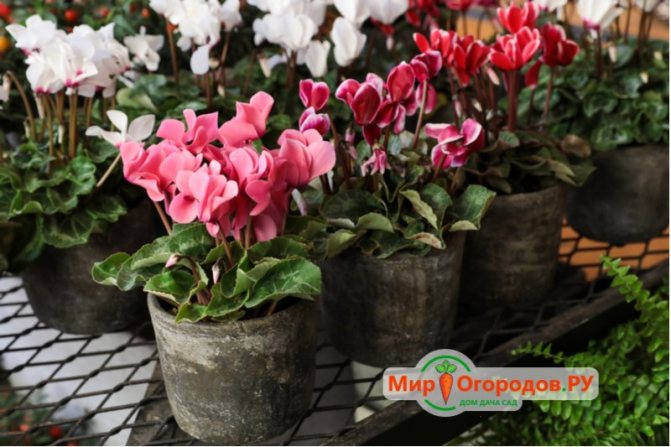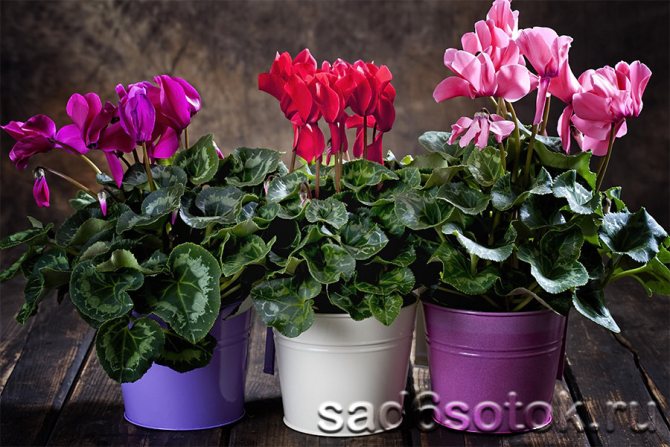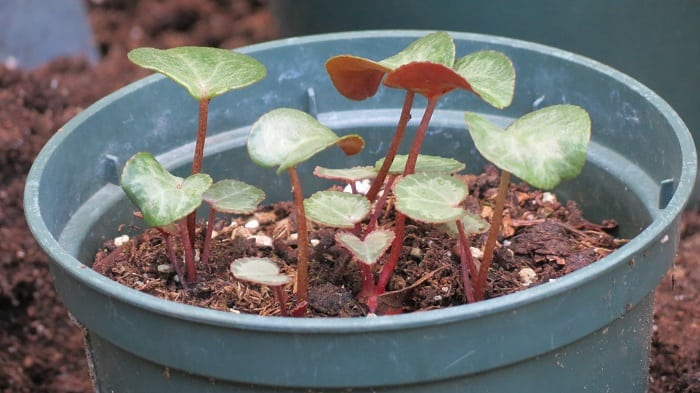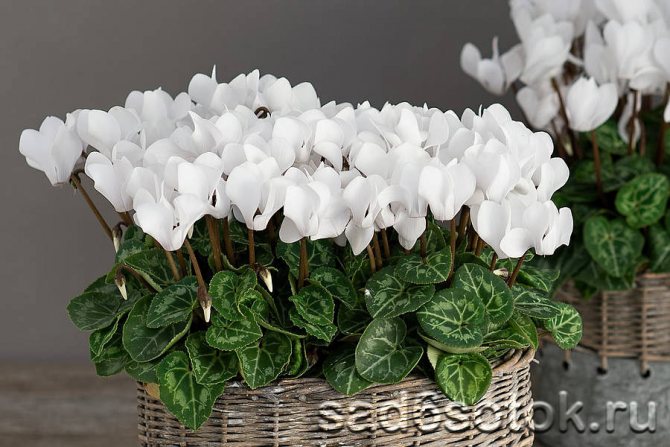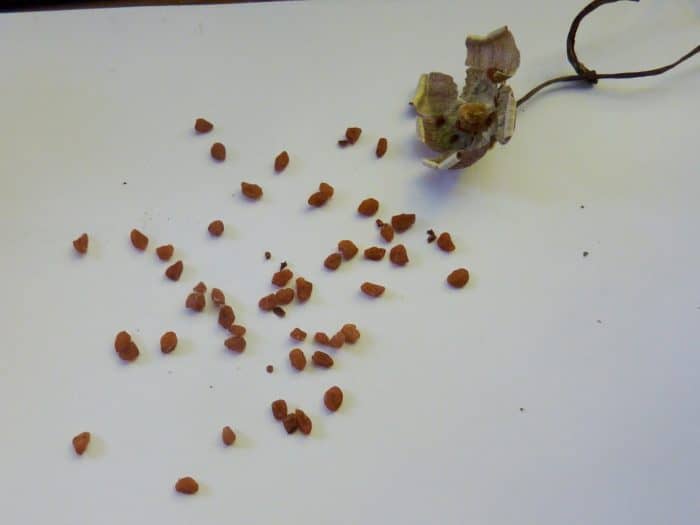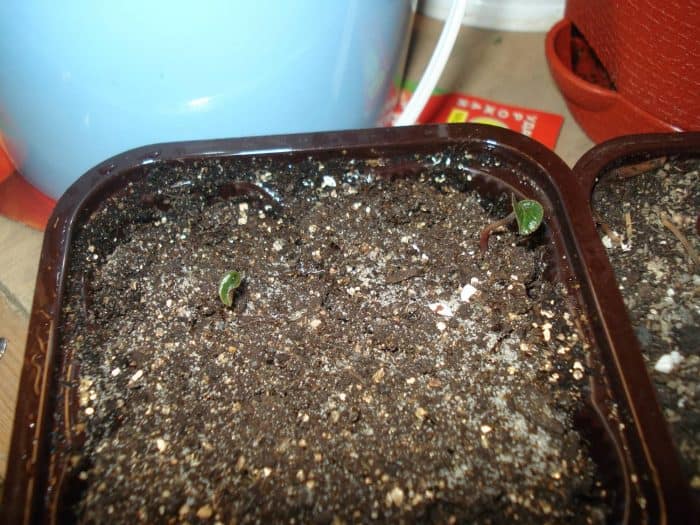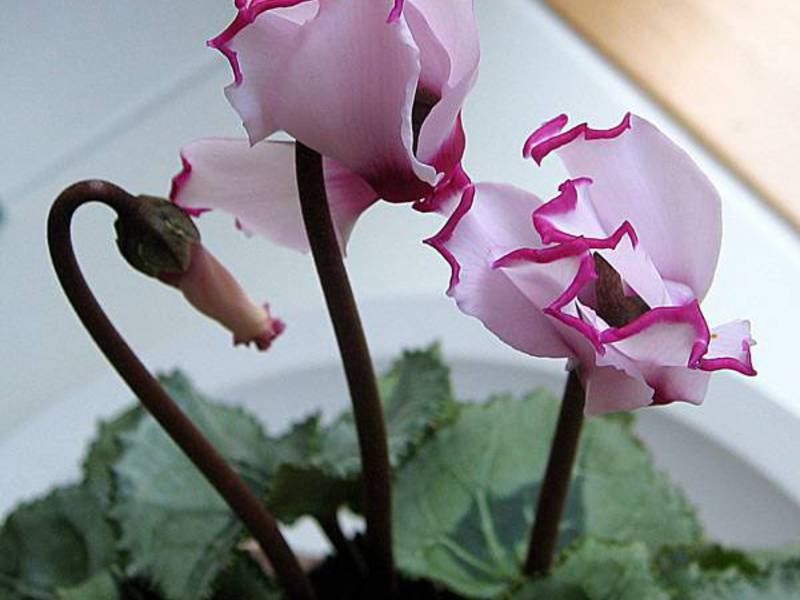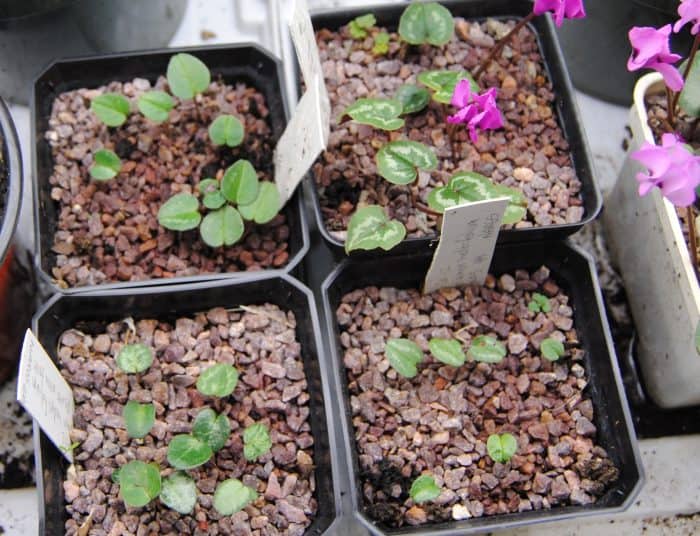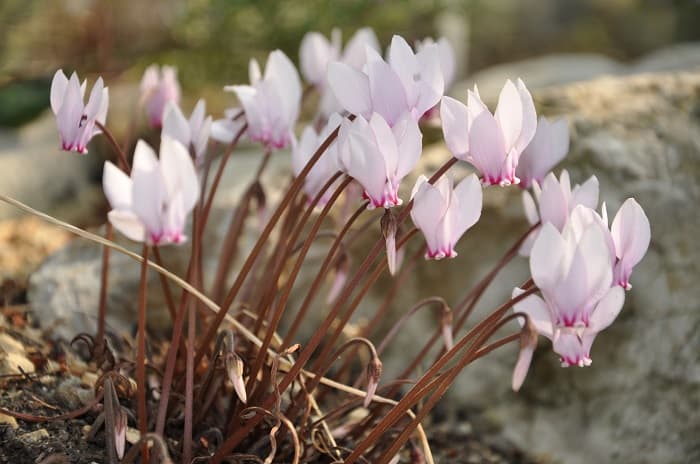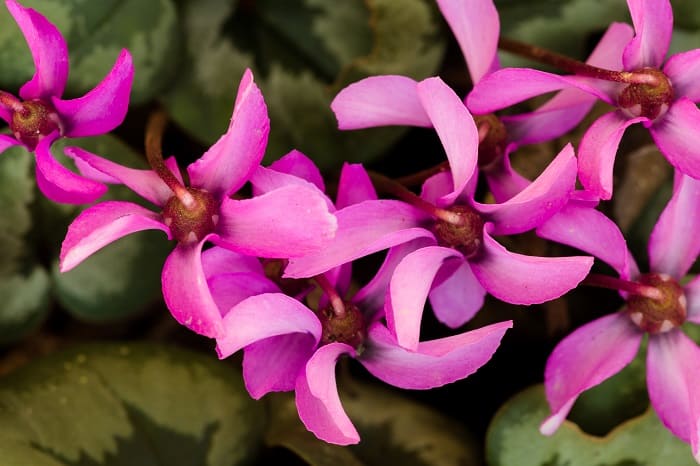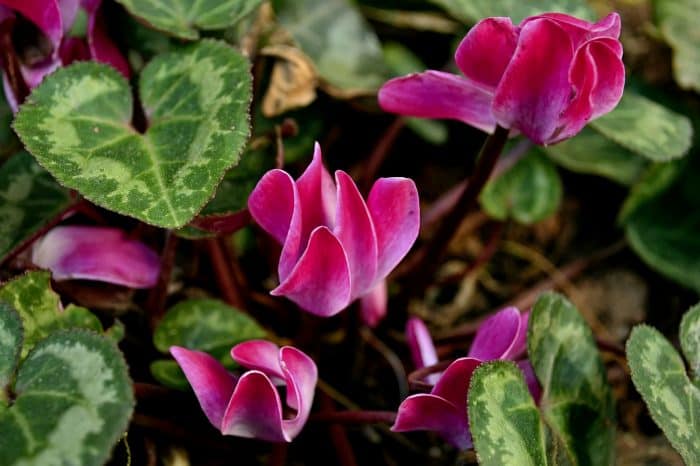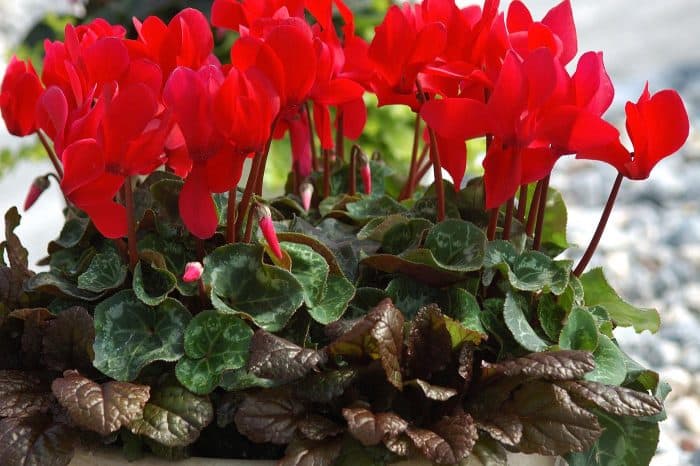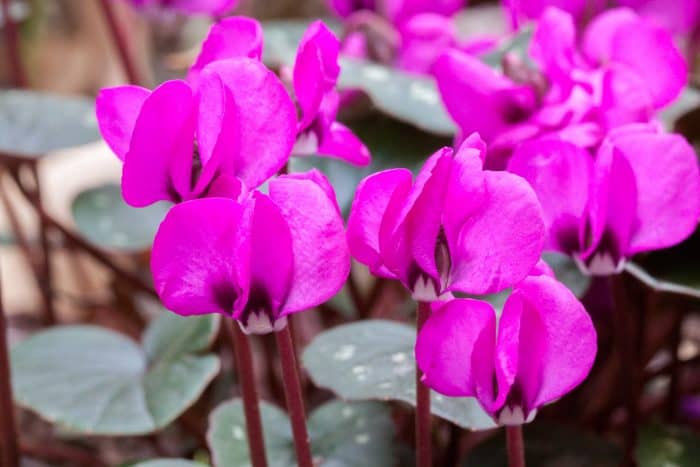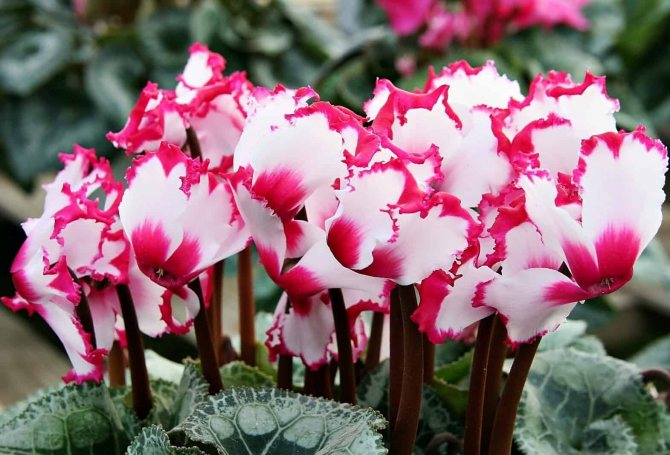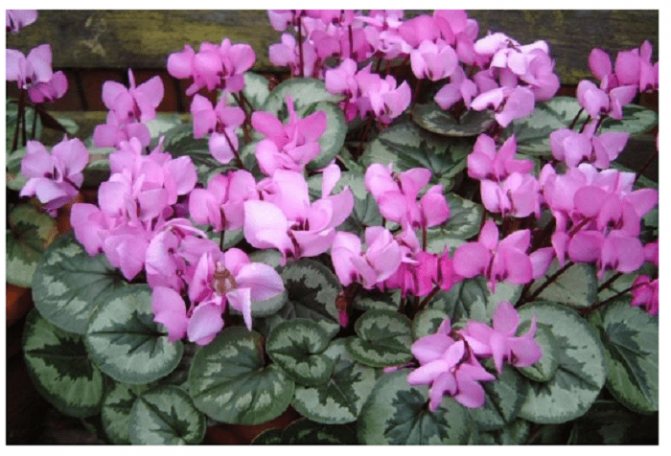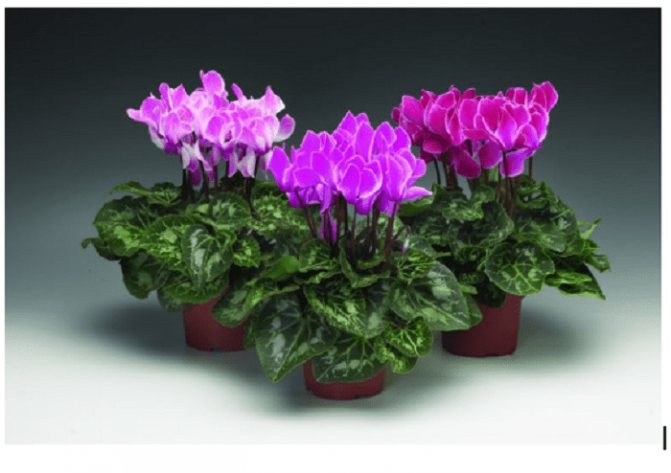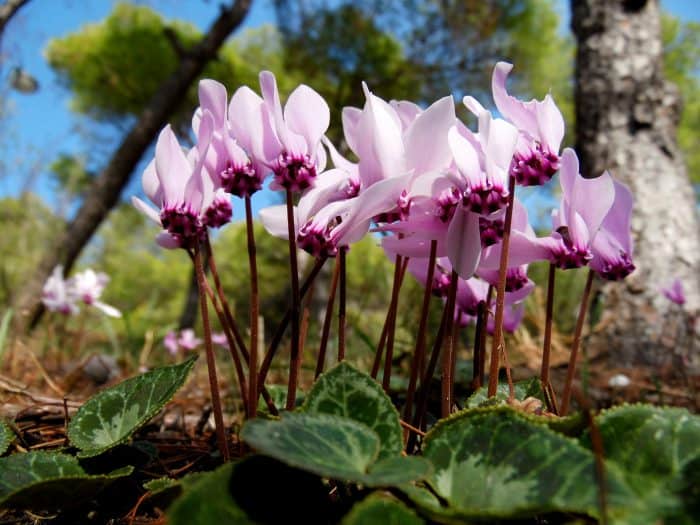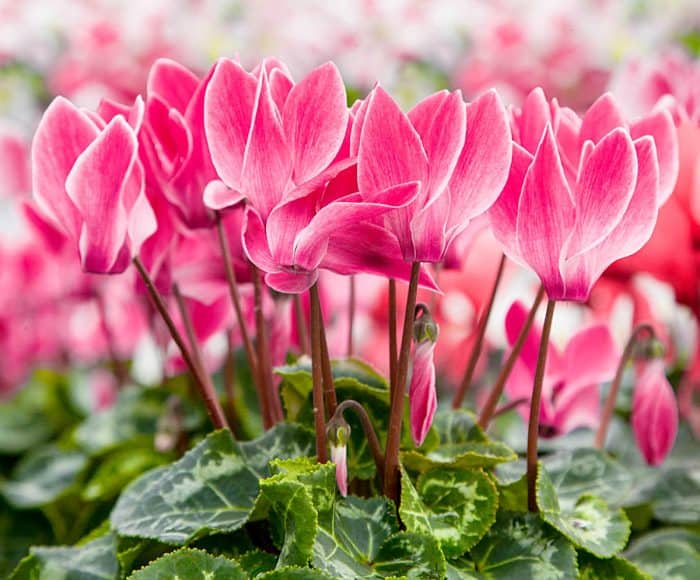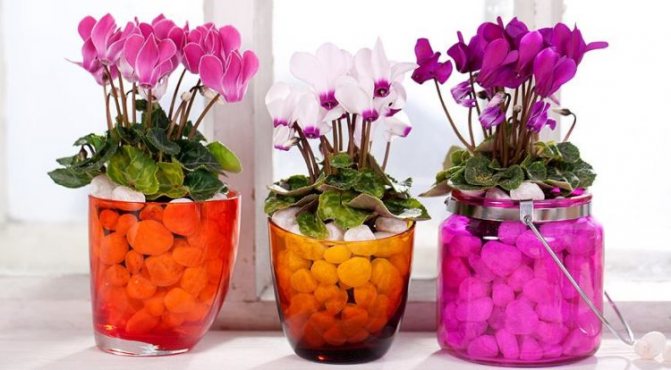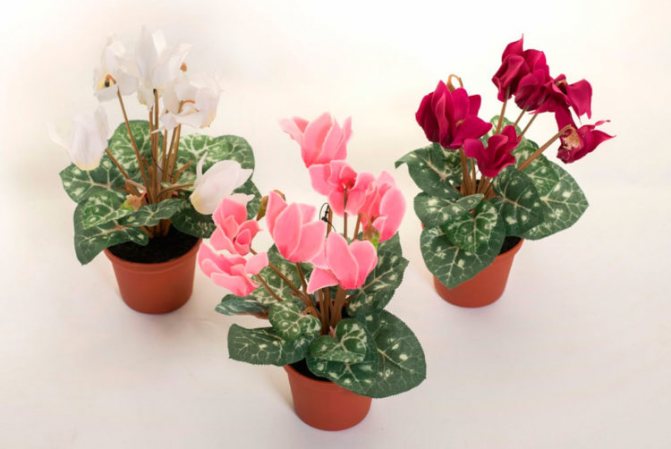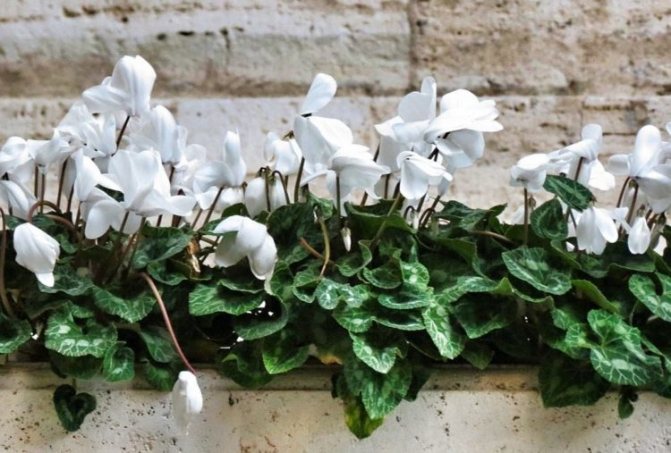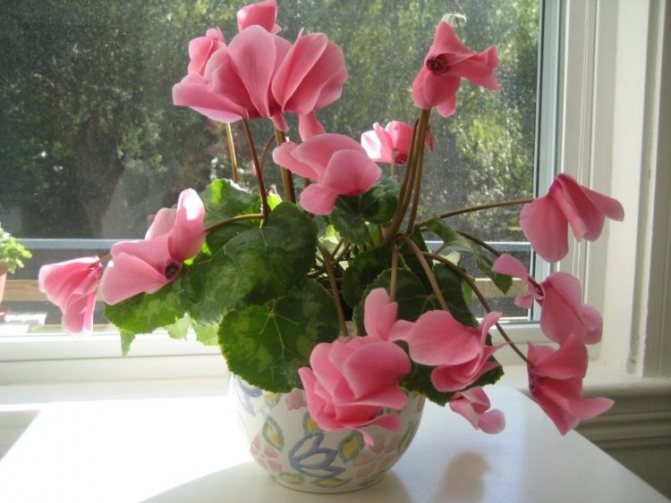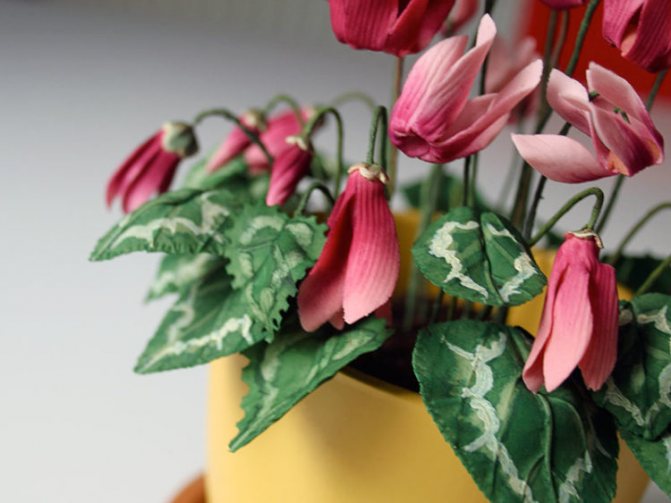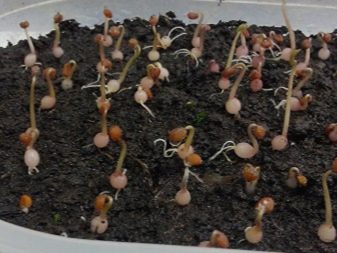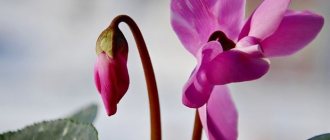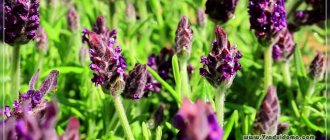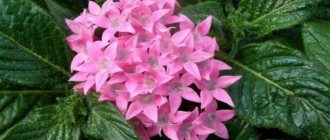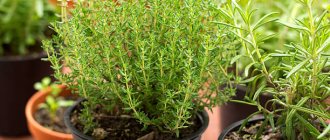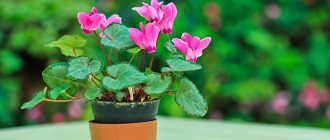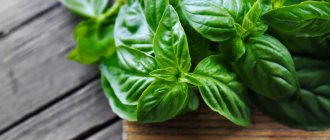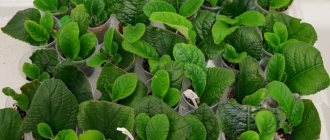Cyclamen is a flowering plant that can often be found among indoor florists. There are several reasons for its popularity. Firstly, cyclamen pleases with its flowering in the winter season, when many indoor plants are dormant. Secondly, it is quite unpretentious in care and does not require special conditions for growing. Compliance with simple agricultural techniques allows you to enjoy the flowering of cyclamen from late autumn to spring. Thirdly, this flower is resistant to almost all pests and diseases.
Reproduction methods
Do owners of an adult plant think about how to propagate cyclamen at home? This can be done in several ways:
- dividing the tuber;
- daughter processes;
- seeds.
In the first case, the onion is cut in half and each part is planted in the substrate. The tuber is divided in August, when the dormant stage ends. Each piece must have a bud and root system. The cut is smeared with brilliant green. The tubers are buried by 2/3, the initial watering is carried out from the pan. In the absence of experience, it is better to refuse this method.
Daughter processes (rosettes) appear on tubers of European varieties. For reproduction, they are torn off and planted in moist, light soil. The wounds on the mother bulb are sprinkled with crushed charcoal. A young outlet is covered with a jar or plastic bottle for 2-3 weeks. In greenhouse conditions, it is more likely to take root. The Persian cyclamen does not produce daughter shoots; it is propagated by tubers or seeds.
The most common way to reproduce a flower is to grow a seed pod and harvest the ripe seeds. Seedlings from their own planting material grow and develop faster, but to increase the number of varieties of cyclamen, you will have to buy seeds in the store. Their germination rate is quite high, 80-100%. The shops have a huge selection of breeding varieties of Persian and European cyclamen.
How else to propagate Persian cyclamen
Vegetative propagation will not give a large amount of planting material, however, firstly, it will ensure the complete preservation of varietal traits, and, secondly, it will allow you to get a strong and viable young plant with minimal effort.
Cyclamen can reproduce in the following ways:
Rooting a leaf at home: how to grow a flower correctly
A leaf blade with a petiole, like Saintpaulia or Gloxinia, will not take root in cyclamen: after standing in water for some time, she will just start to rot... To root a leaf, you need to rip it off by picking out a small piece of tuber from the surface, or choose a leaf with "fingers" - small root-like growths on the petiole.
It is important to remember that only European cyclamen can be propagated in this way, in Persian leaves, even with a piece of tuber, do not take root, and it does not have "fingers". It should be borne in mind that a tuber injury at high humidity is fraught with rotting.
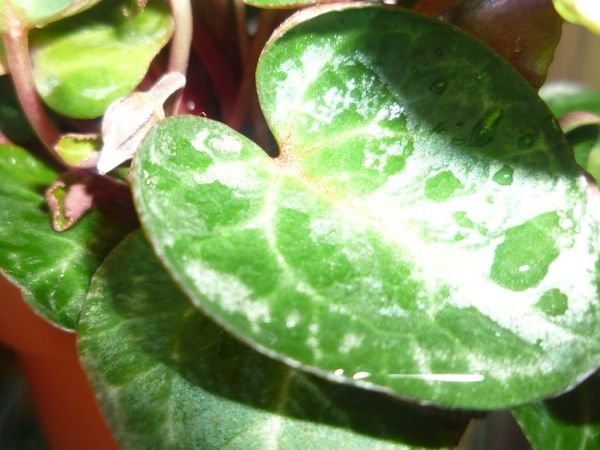
When propagating by a leaf, do not rush to remove part of the tuber with a leaf - first find out which variety of Cyclamen you have at home
Caring for a young plant from a leaf similar to caring for a grown seedling - abundant, but not excessive watering, bright light, which has a beneficial effect on the formation of the outlet coolness.Not only this home flower can be propagated by a leaf - for example, we have already told you how to properly propagate Violet from a leaf so that the flower does not get sick.
Reproduction by rosettes: where is better to plant
A large adult tuber often produces more than one rosette of leaves. Such a rosette is carefully cut or breaks off with a small part of the tuber, after which it is planted in moist soil to grow a new plant.
For better rooting, it is placed in a greenhouse, and after a few weeks it begins to grow its own tuber. It is impossible to break off all the sockets from the mother tuberleft without points of growth, he will die.
The European cyclamen gives more rosettes than the Persian, so it is more often propagated in this way. In addition to rosettes, it also gives small daughter nodules, which are deposited from the mother plant during the dormant period. Persian does not give them.
Dividing a tuber: hazards in growing
For division, a sufficiently large and strong tuber with a large rosette of leaves is needed. With a disinfected knife, the tuber is cut in half, the halves are dried, sprinkled with colloidal sulfur or crushed coal, and then planted in the disinfected soil.
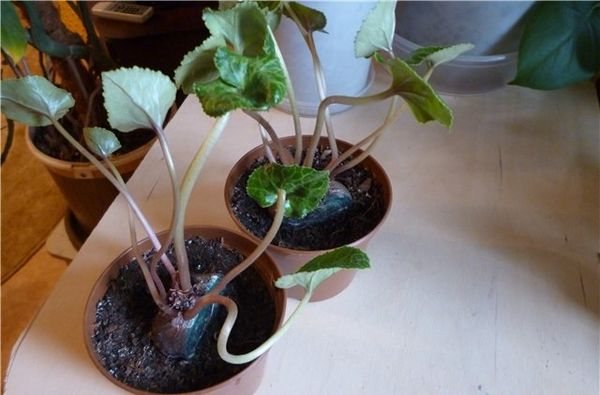

Do not immediately water the divided Cyclamen tuber - in this flower, tuber injury often leads to plant decay
The planted tuber halves should not be watered in the first few days to prevent rotting. Like normal healthy tubers, you need them not fully deepen, leaving about a third above the soil surface.
The first watering of plants obtained by dividing a tuber or rooting outlets is best done with boiled water - this reduces the risk of infection.
Despite the fact that the seedlings obtained with the help of vegetative propagation are stronger than cyclamen from seeds, they bloom earlier and grow powerful tubers faster, rosettes and leaves do not always take root, and when dividing a tuber, both halves of it may die, falling victim bacterial rot or late blight.
Therefore, reproduction by seeds is more reliable and safe, and it makes sense to dwell on it, especially when it comes to the Persian cyclamen.
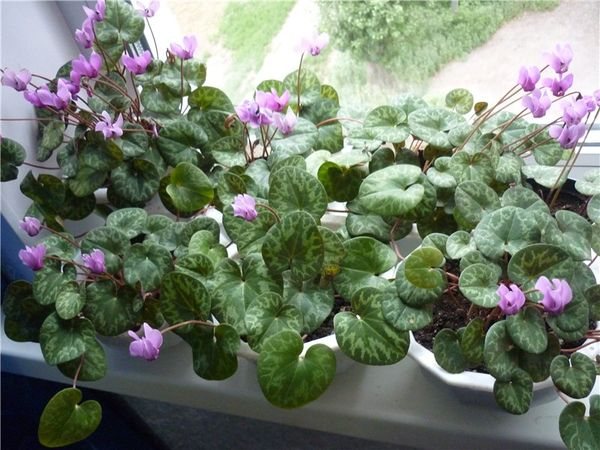

For the European Cyclamen you need to choose the safest breeding method
The European cyclamen, whose seedlings bloom only after two or three years, is best propagated by daughter nodules - this does not threaten the health of the mother plant, in contrast to the division of the tuber and the separation of the rosettes.
Where can I get the seeds?
The easiest way is to buy seeds from the store. A huge assortment of cyclamens of all kinds and colors is on sale. This option is optimal for novice florists or for those who want to expand their collection of indoor flowers. If there is an adult plant at home, then the seeds can be harvested from it. For the reproduction of cyclamen at home to be successful, the flowers must be pollinated. There are no flying insects and no wind in the apartment, so you will have to transfer pollen yourself.
Pollination
During the flowering period (December-February) for a week every morning, gently hit each bud with a finger. Ripe pollen envelops the plant in a cloud and falls on neighboring flowers. Another way will require the use of a paintbrush. A small-diameter, soft-bristled watercolor brush will do. She needs to walk through all the flowers, applying pollen to the pistil. This is called cross-pollination. Repeatedly performing the procedure increases the chances of fertilization. You will find out about the results pretty soon. Upon successful pollination, the flower sheds its petals, then bends under the weight of the fruit.
The seed box ripens in late spring. The readiness of the fruit is determined by the yellow color, drying out and cracking of the shell.Do not wait for the full disclosure of the capsule, otherwise the seeds will fall to the ground. It is torn off a little earlier and left to dry completely. Small brown cyclamen seeds are poured out of the box and collected in a paper bag. It contains information about the collection time. The material is stored in the refrigerator until autumn.
Information. After a year of storage, the similarity of the seeds does not change. Two years later, it decreases by 10%, but at the same time the grown seedlings grow into cyclamens with abundant flowering.
What does the plant look like?
The peculiarity of cyclamen in its colorful bloom, which lasts 3 months... In addition, the plant has the following characteristics:
- height - 30 cm;
- leaves grow from the root, cordate force, leathery to the touch;
- the color of the leaves is dark green, with a silvery tint;
- the root is presented in the form of a rounded bulb with a diameter of 15 cm, which has one growth point;
- flowers consist of oval bent petals, pointed at one end;
- the color of the flowers can vary from white to rich purple.
Check out the photo of the plant below:
Preparing for landing
The most favorable period for growing cyclamen from seeds is the beginning of spring, but they are planted at other times. The harvested seed material should be sorted - to separate viable seeds from empty casings. This will require:
- glass of water;
- h. l. Sahara.
Sugar is dissolved in a glass of water, then cyclamen seeds are poured. After 5 minutes, the husk will float on the surface, and the grains will remain at the bottom.
In a package of purchased material, there are usually only 3 seeds, less often - 5. Products are popular. They offer hundreds of different types of cyclamen. The cost depends on the variety, prices range from 40 to 200 rubles.
For good germination of seedlings, you must first soak the seeds for a day. They are placed on a cotton pad, abundantly moistened with water. Add liquid if necessary.
Advice. Soak the seeds not in water, but in Zircon solution. It is enough to add 4 drops of growth stimulant to 0.5 l of liquid. The drug accelerates the development of plants, improves their immunity and adaptation to the environment.
Cyclamen from seeds: the advantages of this growing method
How to get such a wonderful plant in your house? Of course, cyclamen can be purchased in the store, especially since there is currently no shortage. Most often, already flowering specimens are on sale, which from the first minute of their appearance in the house will delight with their beauty. But there are several pitfalls here.
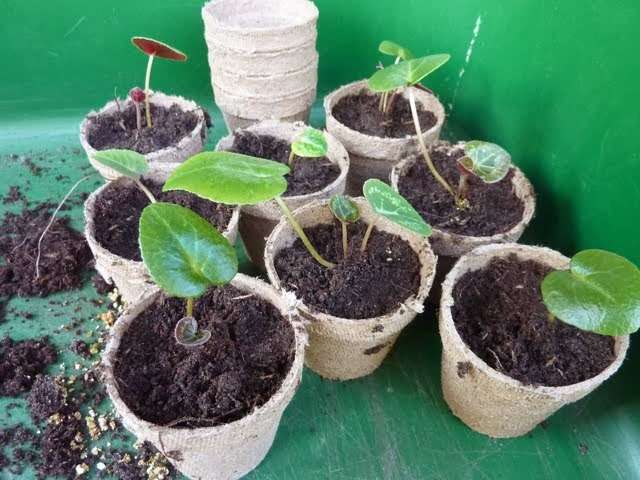

In most cases, cyclamens come to the flower market from abroad, where the plants are grown in greenhouses or greenhouses. In order to achieve their rapid growth and lush flowering, producers use various fertilizers, growth hormones.
So it turns out the following: seeing a beautiful plant in a store, an amateur florist acquires it with pleasure. A week or two after the purchase, the first problems appear. Leaves dry, flowers begin to fall off. As a result, the plant dies. This often happens with purchased cyclamens. How can you avoid this? Grow cyclamen from seeds. This method allows you to get an unpretentious plant, initially adapted to the living conditions of its owner. Such a flower has excellent immunity, which increases its vitality and prolongs the growing season.
Planting seed in the ground
Swollen cyclamen seeds are planted in a container for growing seedlings. There should be holes at the bottom of the container through which excess water will drain. A special substrate is prepared for seedlings:
- leafy land;
- peat;
- vermiculite or perlite.
Attention. If the soil is collected in a forest, park or on a site, it must be disinfected - doused with boiling water, ignited in the oven.
At the bottom of the container, drainage from expanded clay or foam balls is poured. The height of the layer is 2-2.5 cm, it will prevent decay of the bark system of the seedlings. The prepared soil is poured into 6-7 cm. The substrate is poured abundantly with water until its surplus flows out of the holes. Wet seeds are laid out on the surface, the distance between them is 2-3 cm. The soil is poured on top with a layer of 0.5-1 cm. The soil is moistened with a spray bottle. The container with seeds is covered with glass or plastic wrap to create greenhouse conditions - constant temperature and humidity.
The container is placed in a cool, dark place. There should be no drafts and sudden temperature changes. You will have to wait for shoots at least 1 month, in some cases shoots are shown in 2-3 months. It is recommended to keep the container or other container in a room with a temperature not exceeding + 18 ° C. In the warmth, seed germination is delayed. Periodically, the soil is watered, but strong moisture should not be allowed. The greenhouse is opened and ventilated every two days.
Stages of soil and material preparation
The preparation process includes the following steps:
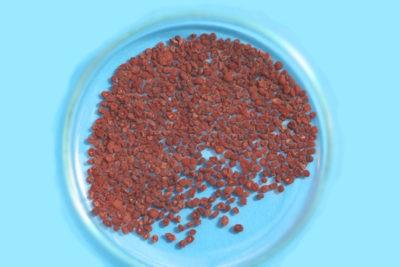

Shake out the planting material in dry bolls and soak in water... Add Epin-extra or Zircon to it. These are drugs to stimulate growth. To prepare the solution, take 4 drops of the drug and 100 ml of water. After 12 hours, remove the seeds from the solution, spread on a cotton pad, covering with a damp bandage. After 24 hours, the seeds will swell and be ready for sowing.- The soil must be steamed... Pour boiling water over it or hold it in the oven for 5 minutes. This will remove pathogenic microflora. Conduct disinfection 14 days before the upcoming planting of seeds.
- Seeds before planting at home, you can try to germinate, and only then plant in pots. To do this, you will need to spread the planting material on moistened gauze, and cover it with a layer of fabric on top. After a day, plant the seeds in a container.
Pot selection
Sowing seeds is carried out in individual pots or boxes. If the first option is chosen, then young seedlings do not need to be transplanted until they grow up, and the pot for them becomes small. When planting in boxes, you will need to pick the seedlings into separate containers, when they have 3-4 leaves.
Choose a pot for cyclamen taking into account the size of the tuber... There should be a distance of no more than 3-4 cm between it and the edge of the container. For a young plant, the diameter of the pot is 8 cm and no more. Adult specimens, whose height is 13-15 cm, will require containers with a diameter of 16-17 cm.
Soil
The soil for the plant should be loose and nutritious, and also air and moisture permeable. You can use a commercially available substrate intended for decorative floriculture.... To prepare the soil, combine the garden soil with peat in an equal amount and add a little river sand.
Seedling care
A month later, the first loops of pinkish-purple color appear on the surface. This is a cyclamen tuber with a root. It appears before the leaves. The container must be rearranged in a place with good lighting. At the top of the sprouts, particles of the seed coat remain. With sufficient humidity, they fall off by themselves. If the flake gets in the way of the leaf, you can wrap it with damp cotton wool for several hours. After such a procedure, it will disappear.
After the appearance of 2-4 leaves, the plants can be transplanted into separate containers. Usually, 100 ml plastic cups are used. This volume is optimal for growing a cyclamen seedling. At the bottom of the cup, holes are made for drainage. Further cultivation of the seed-planted cyclamen takes place in the soil with the same composition that was used in the container. The soil is collected in a glass up to half the volume, then a sprout with a nodule is laid and covered with soil. The surface is carefully crushed, taking care not to damage the fragile seedling. From above, the soil is watered abundantly.
If the flowers grow slightly in three months, don't worry. During this period, they intensively build up the root system. This can be seen by looking through the transparent walls of the cup. The grown cyclamens can be transplanted into pots with a diameter of 5-6 cm. Purchased universal soil for flowering plants is suitable. There should be a drainage layer at the bottom of the pot, occupying ¼ of the volume. The nodule should not be completely buried in the soil; a third of it should be on the surface. It is recommended to irrigate through the pallet. This will avoid rotting the tuber.
The first feeding is performed at the age of six months. A complex mineral fertilizer is used, the concentration of the solution is halved.
Tips for florists
- Young shoots do not need additional feeding up to 6 months.
- Plants up to a year prefer constantly moist soil. Adult cyclamens should be watered sparingly.
- The cyclamen can also be displayed in a walk-through room - it is absolutely not afraid of drafts.
- Additional lighting is not needed for the emergence of seedlings.
- For the best result during pollination, it is important to feed the plant with phosphorus-potassium fertilizer. This will increase the chance of a successful completion of the process.
How much and how to store seeds
You can store the harvested cyclamen seeds for a long time. It should be borne in mind that over time, seed germination decreases. So, up to 2 years of storage germination is at a high level, then this parameter begins to fall. Germination rate is only 30%. This means that if you delay the landing, then all attempts may end in failure. As for the storage itself, it is better to place the seeds in a paper envelope. The room should be cool.
What needs to be done after germination
The timing of the appearance of the first shoots depends on the variety of the selected cyclamen and can range from 1 month to six months. In the future, seedlings of any variety are characterized by slow growth, which is associated with the growth of tubers. This process can take about 3 months. It is important during the period of active growth of seedlings to regularly spray the soil in the pot and air the planting.
A sprout with a pair of leaves should form from weak petal loops. When he gets stronger, fully open, it is time to dive. A young crop needs moisture and coolness, so do not forget about frequent watering and ventilation. In six months, feeding the seedling with any fertilizers for flowering crops will become relevant.
Did you know? Bioenergetics believe that cyclamens feed on negative energy, and in return give a positive charge. That is why they are advised to grow in every home.
.
Preparation of soil and materials
To achieve the best result in growing home cyclamens, it is worth germinating the seeds in advance. This process will prepare the seed for planting in the main container.
When germinating, you can take a plastic container with low sides and a lid. Pour a thin layer of soil onto the bottom of the container. Place seeds in it. The density of their placement does not really matter, but it is better that the distance between the seeds is about 1 cm. The soil in the container must be constantly moistened.
In order not to exceed the humidity level, and to irrigate as evenly as possible, you can use a manual spray gun set to the maximum spray mode.
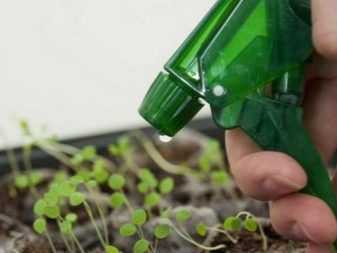

To prevent excessive evaporation of liquid from the container during soaking, it should be covered with a lid. The lid should not be too tight. The seeds require fresh oxygen and some ventilation to keep mold from forming.
It is important to observe the temperature regime. With temperature indicators that do not fall below +20 degrees, the seeds are able to germinate in 30-40 days.Excessive temperature can lead to the start of anabiosis process inside the seeds. The same is true at low temperatures. Damage to seed material in the form of drying or decay is not excluded.
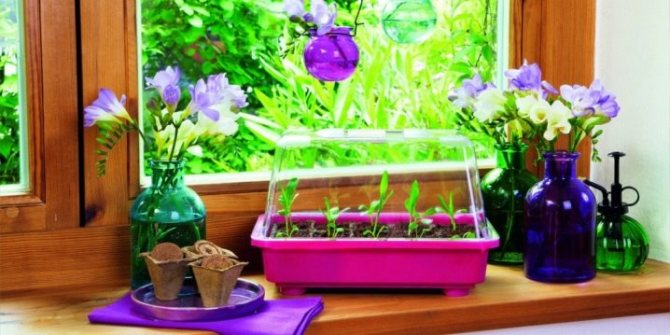

While the seeds are germinating, you can start preparing the soil. Flower shops sell different types of potting soil that are suitable for different plants. Cyclamens are no exception, since they are quite demanding on the composition of the soil in which they will grow. If it is not possible to purchase it at a specialized institution, you can prepare the mixture yourself.
To prepare the soil for cyclamens you will need:
- leafy ground - humus of woody leaves;
- peat or peaty soil;
- sand is not river, without clay admixtures.
The last ingredient can be washed and cleaned of unnecessary inclusions of silt and clay components. The sand acts as a thinner and prevents the soil from caking, which could prevent oxygen from entering it.
All components of the mixture, including any fertilizers, should be mixed in moderate proportions. Excessive amounts of this or that constituent element can damage the structure of the seeds and reduce the chances of germination.
The prepared soil should not contain components that continue to support the decay process. As part of this process, heat is generated inside the soil, and the seeds can "burn".
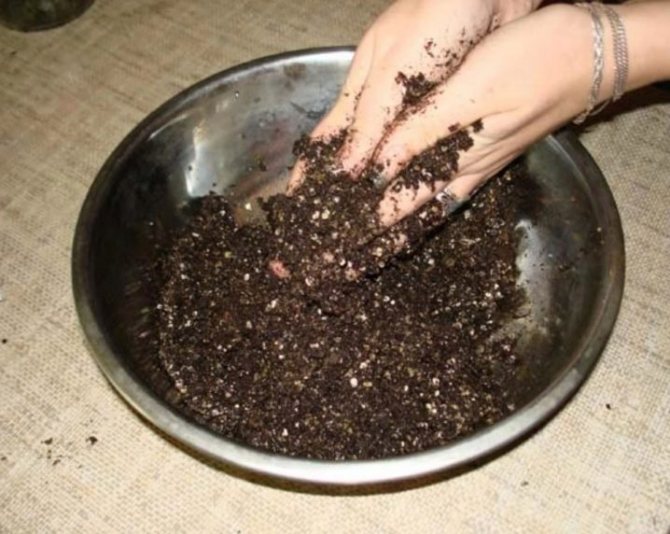

A container for disembarkation is prepared in advance. The germinated seeds are placed in a box, where they undergo an initial ripening period. The final planting is done in pots with sufficient internal volume and diameter, which will allow the future tuber to develop in spacious conditions.
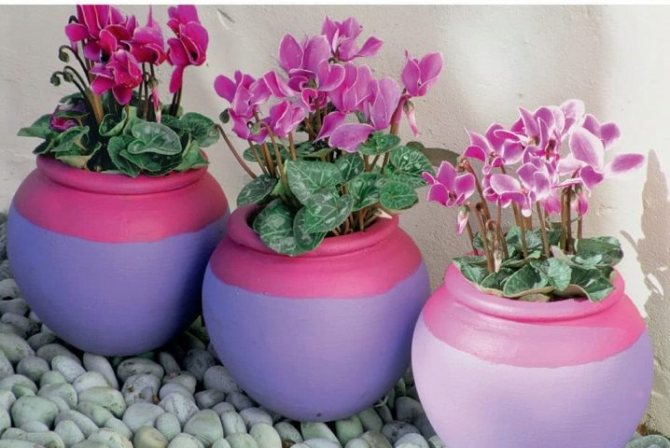

Conditions for active growth
The health and appearance of plants in the future depend on proper care of the seedlings.
All pots with young cyclamens are placed on a pallet with small pebbles. Water must be poured onto this stand - moisture on the tubers and leaves is very harmful to plants. The water should be separated, at room temperature. After 30–50 minutes after watering, its remnants are drained from the pallet so that mold or mildew does not start.
The optimum temperature for seedlings is + 14… + 16 ° C.
Under these conditions, you will be able to grow a sturdy and resilient plant with a compact rosette shape. Bushes that grew in the heat will look untidy loose. In addition, they are more susceptible to disease.
Drafts should be avoided - young plants are especially sensitive to them. The lighting should not be too bright. The best choice is west or east windows.
Please note that the first 3-4 months after the pick, the cyclamen spends energy mainly on growing tubers and the root system, so it may seem that the seedlings have stopped developing. In fact, this is not the case, when the roots get stronger, the growth of green mass begins.
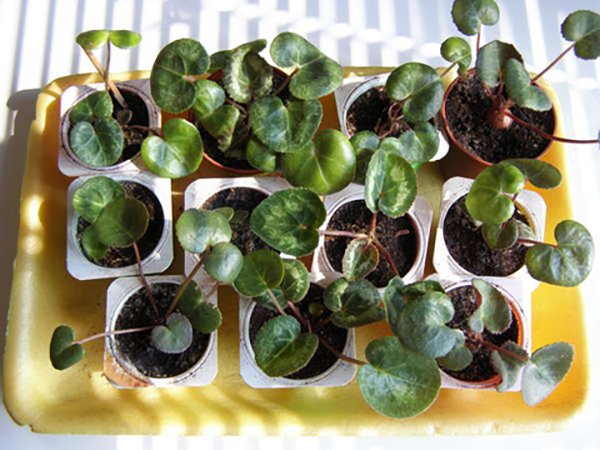

Transfer to a permanent place
Transplanting to a permanent place is usually done at the moment when the plant begins to emerge from its first hibernation.
The capacity should not be very large, only slightly larger than the root system of the bush, and certainly with a drain hole. A drainage layer is laid at the bottom. The soil should be a mixture of peat, leafy earth, and sand.
The transplant is carried out by the transshipment method, together with the plant, transferring part of the soil to a new place. It is necessary to plant cyclamen so that the tuber is half submerged in the soil.
After transplanting, the plant is watered abundantly - in a tray or along the edge of the pot.
Home-grown cyclamen will flower for the first time 13-14 months after planting.
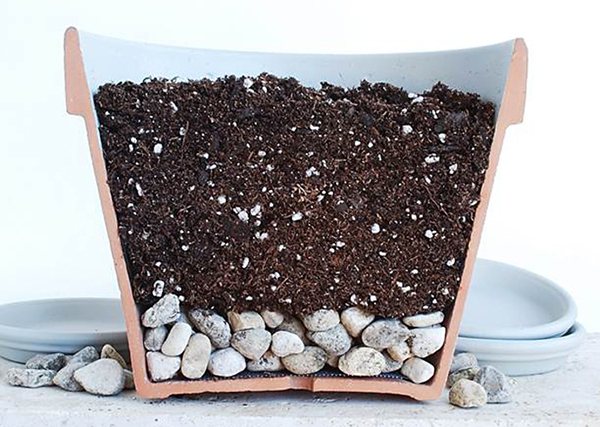

Disease and pest control
Cyclamen is most often affected by fungal diseases, including:
- Gray rot... It is formed as a result of abundant watering, waterlogging.If a disease was found, then carefully remove the plant from the pot, remove the affected parts of the roots, rinse them in a solution of potassium permanganate. As soon as the tubers are dry, plant the plant in a new pot with a pre-steamed soil composition.
- Root rot... It affects a flower that has been affected by fungal pathogens that live in the ground. To get rid of the disease, carry out the treatment with Glyocladin. Rinse the tubers thoroughly in a solution of potassium permanganate and dry.
- Sooty fungi... They inflict damage on the stomata and ducts of leaves, leading to their death.
Conditions for germinating seeds
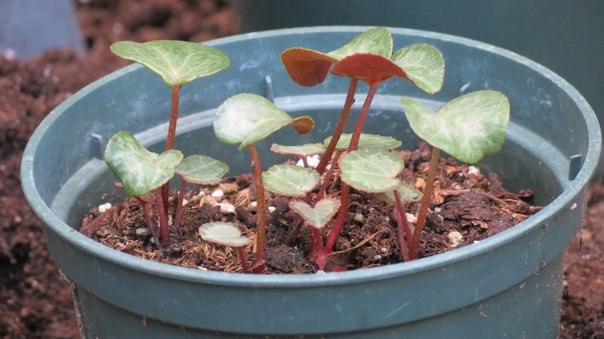

In order for the seeds to sprout, they need to create optimal conditions for the emergence of seedlings.
Temperature
Cyclamen is an unusual plant that germinates faster when the air is cool. In order for the first shoots to hatch 30-40 days after sowing, you need to keep the temperature at + 14 ... + 16 ° C. If it is higher, it will take more time.
Lighting and location
Until the seeds have germinated, they should be kept in the dark. You can put the bowl in any place with a suitable temperature and cover it with a dense material that does not allow light to pass through.
Air and humidity
For seedlings to emerge, it is important that the air is constantly humid. Optimally, the humidity level is 85-95%. It is easy to maintain using a film or glass, which is covered with a bowl of planted seeds.
Photo
Check out the photo of the plant below:
When to sow seeds for seedlings
Cyclamen seeds germinate for a very long time - it can take from 1 to 3 months. Therefore, the planting time must be calculated so that seedlings appear in the spring, when the sun's rays become brighter and the length of daylight hours increases. In this regard, it is better to sow seeds for seedlings in the second half of winter (in January or February), regardless of the region of the country in which you live.
Attention! Soaked and swollen seeds germinate faster, so they need to be planted at the end of February, and dry seeds hatch longer. Therefore, they can be planted at the end of January.
How to collect cyclamen seeds at home
If there is a blooming cyclamen in the house, then you can get seeds from it for further cultivation. To collect the seeds, you will need to perform a number of actions:
- Use a brush to pollinate the plant. For this, pollen is taken from a completely different cyclamen. Plants can be either single or varied.
- To achieve maximum effect, professionals recommend pollination several times. This should be done in the morning.
- A pollinated plant should be fertilized with potassium sulfate.
When the flowering period is over, seed pods will appear on the plants. They are removed until they burst and wrap in a napkin.
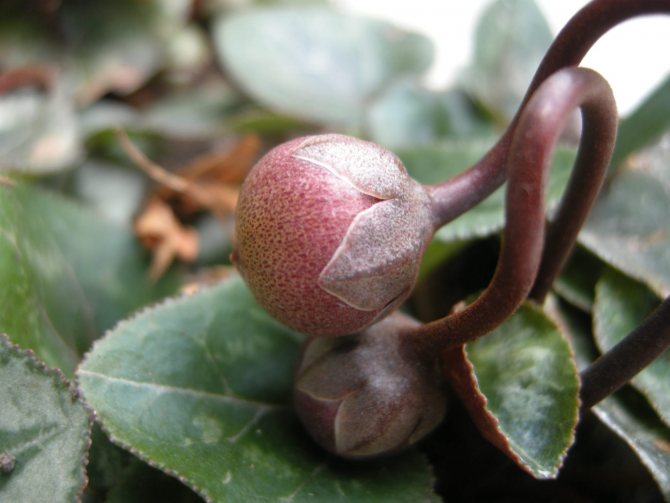

Brief description of cyclamen
Cyclamens, or alpine violets, deserve attention due to their bright and long flowering, cold hardiness and unpretentiousness. These herbaceous perennials represent the Primrose family.
They are characterized by:
- a flattened bulb root with a diameter of up to 15 cm with a single growth point (to damage it means to destroy the plant);
- basal dark green heart-shaped leaves with a mother-of-pearl pattern and leathery structure, about 25-30 cm high;
- original flowers, the bent petals of which resemble fantastic butterflies with pointed ovals of wings.
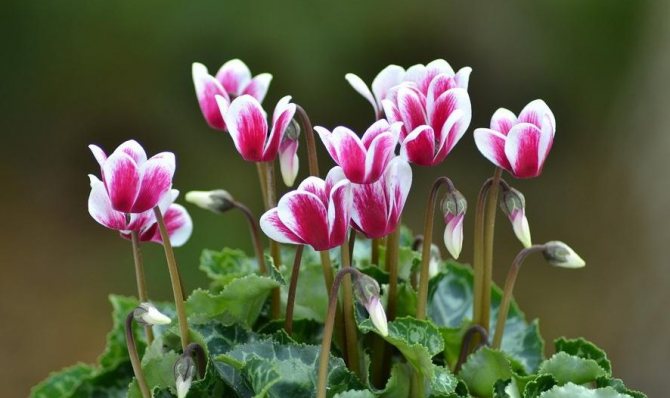

In the wild, the plant is found in the Mediterranean latitudes and in northern Africa. But at the same time, it does not tolerate dampness and high temperatures. The ideal environment for it is year-round coolness and moderate humidity. Today, taking into account the contribution of breeders, you can see terry and large-flowered varieties of cyclamens in pale pink, burgundy, white, lilac, beige, deep purple colors.
Cyclamens are most suitable for indoor growing:
- European - characterized by medium-sized fragrant flowers with bright pink petals and dark emerald leaves;
- Persian - very popular in floriculture, represented by many varieties that differ in shade, doubleness and size of flowers.
By dividing the tuber
If you are going to propagate the cyclamen by dividing the tuber, then the bulb is cut in half and each individual part is planted in the substrate. The tuber divides in the month of August, when the dormant stage is over. Each piece must have a bud as well as a root system. After the cut, the cut must be lubricated with brilliant green. Then the tubers go deep into the ground by about 2/3. How to water cyclamen after planting tubers? The first watering is carried out from the pallet. If you do not have such experience, then it is better to abandon this breeding method.
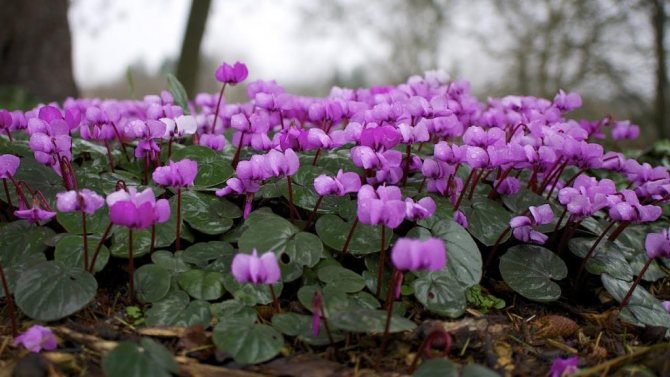

The best substrate
The soil for planting should be friable, slightly acidic or neutral, well water and air permeable.
Some growers use peat, but it can retain moisture in the middle and lower layers, which, without a strict dosage of watering, leads to root rot. To make the peat looser, you can add fine perlite or coarse sand to it.
You can sow cyclamen in soddy soil or leafy soil. To destroy the spores of harmful fungi and the eggs of parasites, such soil is poured over with boiling water or ignited in the oven.
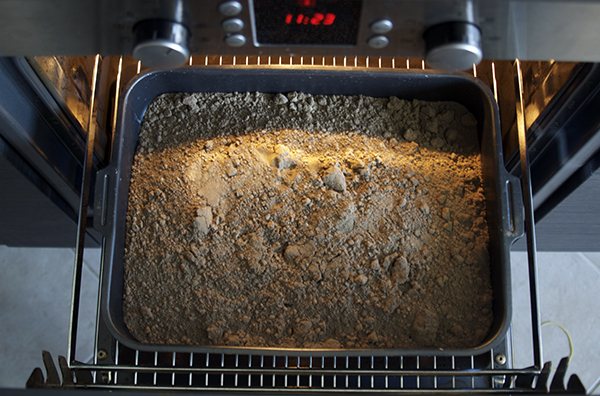

Pollination
During flowering, which lasts from December to February, for a week every morning, gently tap each bud with your finger. The ripe pollen should envelop the plant in a cloud and fall on the neighboring flowers.
But there is also another method of pollination. It requires a small diameter watercolor brush with a soft bristle. She needs to walk along all the branches, applying pollen to the pistil. This pollination is usually called cross-pollination. If you repeat this procedure, then the chances of fertilization will increase. The results will not be long in coming. Upon successful pollination, the flower will shed its petals, after which it will bend under its weight.
What you need to grow seedlings
To propagate cyclamen by seeds, you will need the following materials and tools:
- container (what it should be, we have already said above);
- nutritious and loose soil mixture;
- drainage material (pieces of foam or perlite);
- scapula;
- gloves;
- water and a bottle with a spray bottle for irrigation;
- film or glass.
To care for the seedlings, you will also need individual cups with drainage holes, a dive peg, and new soil. Later, when the seedlings get stronger and begin to grow actively, you will need to purchase mineral fertilizers.
Do you want to buy a cyclamen?
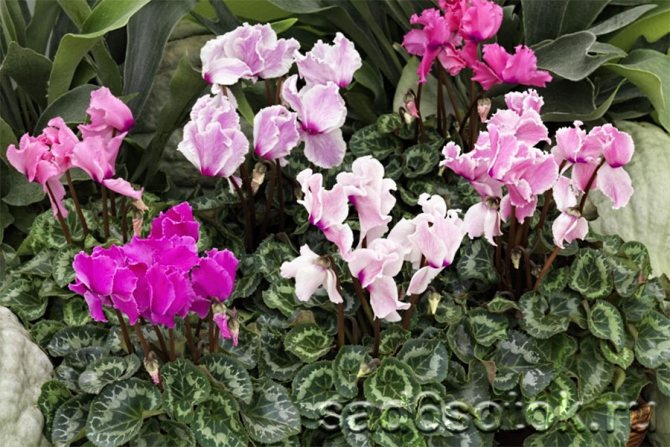

Cyclanen terry varieties
In order for the cyclamen to become a long-liver at home, when buying, you need to choose the right healthy specimen. Do not be afraid to be picky, because often the finished plant from the store begins to be capricious and dies. What do you need to pay attention to first?
- The plant should not be waterlogged. If the pot is heavy and water is leaking from the bottom, it is possible that this watering regime is common practice in this store. Excess moisture is detrimental to the tuber. Better not to risk it and buy the flower elsewhere.
- The root system must be healthy with no soft parts. By lifting the pot with a plant, you can assess its condition. The presence of many tough white roots protruding from the drainage holes is a good sign.
- The plant should not have yellow, lethargic and spotted leaves. You must refuse to buy such copies, even if they are sold at a large discount. These cyclamens are unlikely to be friends.
- In a healthy cyclamen, the tuber is hard on all sides.If the plant has a lot of buds and young leaves, this also confirms the viability of the tuber.
Ready-made cyclamens are usually bought in late autumn or winter, so they are well packaged in the store so that the plants do not die during transportation due to the cold.
In order for the flower to adapt better at home, it must be transplanted from the store soil as soon as possible. If this cannot be done in a short time, then the top of the tuber is freed from the soil from the plant and placed in a cool place. During this period, you need to be careful with watering, since store cyclamens are sold in peat and it is easy to make a mistake and fill in a new flower. But nevertheless, you should not delay with the transplant of a purchased plant.


